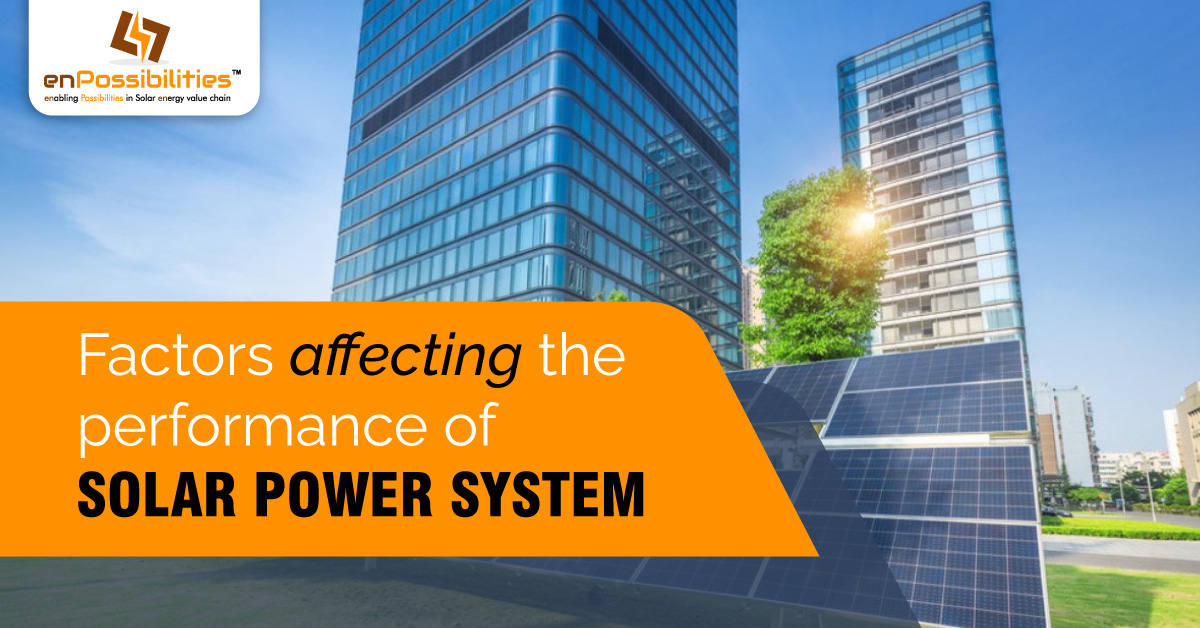Solar energy systems are a crucial component of the energy infrastructure of the future. The need to replace carbon-based fossil energy sources with renewables to limit global warming to 1.5 ° C, as well as raising awareness of environmental issues and the availability of financial incentives, have all boosted the solar business.
A solar cell, also called a photovoltaic cell, is an electronic component that can convert solar energy into valuable electricity. The efficiency of a solar cell measures how much energy can be generated from sunshine. There are a few things to keep in mind to ensure the solar power inverter for a home in India function at peak performance.
Changing Climate Affecting Solar Power Inverter For A Home In India
Many of us believe the common misconception that higher temperatures result in greater solar panel efficiency.
High temperatures cause a decline in voltage and overall power, and prolonged exposure to heat can prematurely destroy solar cells, reducing their useful lifespan and their output.
Colder temperatures are preferable to warmer ones for solar cells; for example, solar panels exposed to 25 C may produce much less power than in actual outdoor conditions.
Therefore, for every degree above 25 degrees Celsius, a solar panel’s production decreases by roughly 0.25% for amorphous cells and about 0.4% to 0.5% for crystalline cells.
As a result, during the hottest parts of the summer, panel temperatures can easily reach 70 C or higher, causing them to produce as much as 25% less power than they are rated for at 25 C.
Therefore, in most of India, a 100W panel will only produce 75W in April, May, and June when the temperature is high, around 45 C, and there is increased demand for electricity.
Shading That Can Affect Solar Energy Inverter In India
Just like a clog in a water pipe slows down the flow of water, shading a solar cell slows down the current flow through the entire string.
Shaded cells affect the solar power system because the cells inside a panel are typically connected in series. However, in the real world, shadows will fall on occasion, so partial shading must be considered when setting up the structure.
If the afflicted panel is connected in series (in a string) with other panels, the output of all of those panels will be diminished. The evident approach here is not to wire the panels in series.
Position of the Roof
Since the sun always rises in the south, a solar energy inverter in India must be oriented in a southerly direction to be effective in the Northern Hemisphere. Therefore, solar panels should ideally be oriented to face south to receive the possible sunlight.
This angle specificity maximizes energy production by having sunlight strike the panels at a perpendicular angle (between 30 and 40 degrees if possible) when they are facing south. During the winter in the northern latitudes, snow slides off solar panels more quickly if they have an edge along these lines.
Seasons, latitude, longitude, and sunlight hours all require that the solar panels’ inclination be actively adjusted.
Whether or not the surface of solar panels is clean
The efficiency of photoelectric power conversion is closely related to the cleanliness of the solar panel surface. The effectiveness of solar modules can be diminished by several causes, including pollution, precipitation, snow, dust, and sandstorms; to counteract this, it is essential to have them cleaned at regular intervals at a cost commensurate with the local labour rate.
Spring is the most fantastic time to undertake an annual clean because, in most regions, pollution levels are highest then. Although, if cleaned once or twice a year, solar panels can increase their electricity output by 3.5% to 5.1%, respectively, compared to how much they produce when not cleaned.
Location
The average annual sunshine hours are not uniform around the globe. Designing a cost-effective solar array that considers the quantity of sunlight your home receives can be challenging.
Weather, season, and, most crucially, your location’s latitude all play a role in determining insolation levels within your home or business.
Remember to include annual production when calculating solar panel output, as seasonal climatic variation will affect your solar array’s output differently throughout the year.
Even with careful design, the efficiency of even the best solar panels can be negatively impacted by circumstances beyond their control. We realize cutting costs on monthly electricity bills is a significant motivating factor in your decision to switch to solar energy. Connect with enPossibilities today if you’re having trouble getting this done, or you’re thinking about putting one in and want to know what it’s worth. As a company, we are pleased with the meticulous attention to detail we have given to providing our consumers with high-quality solar energy equipment and information. Also, we assure that our solar system inverter price is affordable for you.

